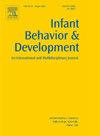人类和其他类人猿母性行为的比较研究
IF 1.9
3区 心理学
Q3 PSYCHOLOGY, DEVELOPMENTAL
引用次数: 0
摘要
在包括人类在内的许多物种中,母亲的照顾对婴儿的生存和发育至关重要。在这里,我们使用比较发育的方法来研究预测灵长类母性风格变化的因素,特别是在身体接触、携带、护理、触摸、梳理、约束、拒绝、物体刺激、接近和离开的分配中。我们对来自人属(即德国白人母亲:N = 10)和其他四个灵长类属(Pan, hyloates, Nomascus, Symphalangus: N = 38)的母子对在婴儿1、6和12个月时进行了行为观察。我们观察到,母亲根据后代的年龄(随着婴儿的成长,一些保护/近端行为减少,一些排斥/远端行为增加)和后代所经历的潜在风险(保护/近端行为在人属动物中往往高于潘属动物)对其行为进行了部分调整。尽管只包括圈养类人猿群体的局限性,这项工作为五种灵长类动物的母婴互动发展提供了新的见解,并有助于我们理解人类养育行为的进化根源。本文章由计算机程序翻译,如有差异,请以英文原文为准。
A comparative approach to maternal behavior in humans and other apes
In many species, including humans, maternal care is crucial for infants’ survival and development. Here, we used a comparative developmental approach to investigate the factors that predict variation in primate maternal styles and, specifically, in the allocation of body contact, carrying, nursing, touching, grooming, restraining, rejection, object stimulation, approaches and leaves. We conducted behavioral observations on mother-infant pairs from the genus Homo (i.e., White German mothers: N = 10) and four other primate genera (Pan, Hylobates, Nomascus, Symphalangus: N = 38), when infants were 1, 6 and 12 months old. We observed that mothers partially adjusted their behavior to the offspring’s age (decreasing some protective/proximal behaviors and increasing some rejective/distal ones as infants grew up), and to the potential risks experienced by offspring (with protective/proximal behaviors being often higher in Homo than Pan). Despite the limitations of only including captive ape groups, this work provides novel insight into the development of mother-infant interactions across five primate genera and contributes to our understanding of the evolutionary roots of human parenting behavior.
求助全文
通过发布文献求助,成功后即可免费获取论文全文。
去求助
来源期刊

Infant Behavior & Development
PSYCHOLOGY, DEVELOPMENTAL-
CiteScore
4.10
自引率
4.80%
发文量
94
期刊介绍:
Infant Behavior & Development publishes empirical (fundamental and clinical), theoretical, methodological and review papers. Brief reports dealing with behavioral development during infancy (up to 3 years) will also be considered. Papers of an inter- and multidisciplinary nature, for example neuroscience, non-linear dynamics and modelling approaches, are particularly encouraged. Areas covered by the journal include cognitive development, emotional development, perception, perception-action coupling, motor development and socialisation.
 求助内容:
求助内容: 应助结果提醒方式:
应助结果提醒方式:


